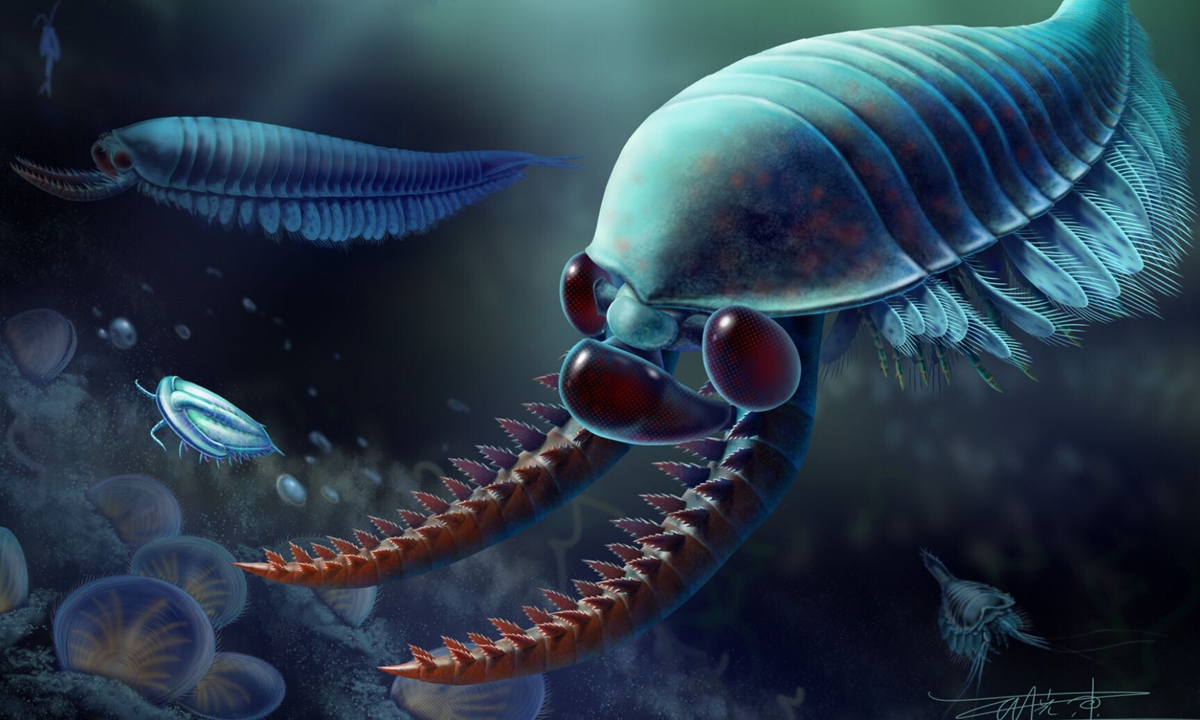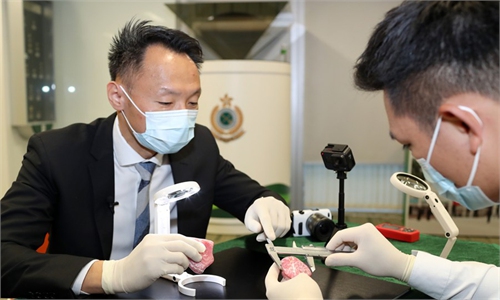ARTS / CULTURE & LEISURE
Researchers from China, UK confirm 520m-year-old animal had 3 eyes

520 million years arthropod Photo:Courtesy of Liu Yu
Chinese and British paleontologists have rewritten the description of a kind of arthropod that can be traced back to 520 million years ago, refreshing the evolutionary process of the ancient animal, according to the Institute of Paleontology at Yunnan University on Wednesday.Liu Yu, a research fellow at the Institute of Paleontology at Yunnan University and author of the paper, explained that previous studies described the animal, which has the scientific name Kylinxia, as having five eyes, consisting of a pair of anterior eyes and three posterior eyes. However, the latest research revealed that it actually had only one central eye and a pair of lateral eyes.
Liu told the Global Times on Wednesday that this species is a famous Cambrian arthropod species that was first published in Nature in 2020, after which it received widespread attention and recognition from peers and the public at home and abroad. Kylinxia, from the Chengjiang biota in the Cambrian explosion, is considered a crucial transitional representative for the origin of arthropods and has high scientific value.
According to Liu, the research has further clarified the evolutionary history of this species.
To obtain a clear understanding of the complete morphology of Kylinxia, the joint research team employed techniques such as micro-computed tomography (CT), computerized 3D modeling and virtual dissection. Such measures have enabled them to visualize the fossil in three dimensions.
Additionally, this study refined and revised the morphology and quantity of the anterior appendages, trunk segments, and posterior appendages, proposing a new hypothesis regarding the evolution of the head in early arthropods.
The study was conducted by researchers from Yunnan Key Laboratory for Paleobiology and the Institute of Paleontology at Yunnan University, Chengjiang Fossil Museum in Southwest China's Yunnan Province, the University of Leicester and the Natural History Museum in London.
The Chinese team was mainly responsible for the collection of fossil specimens, processing of basic data, data analysis and confirmation of the research direction
Lead author of the study, Robert O'Flynn, a PhD student at the University of Leicester School of Geography, Geology and the Environment, called the preservation of the fossil animal "amazing," as they were able to digitally turn it around and literally stare into the face of something that was alive over 500 million years ago with the support of CT-scanning.
"As we spun the animal around, we could see that its head possessed six segments, just as in many living arthropods," he said, according to the University of Leicester.
"The success of this research is attributed to the assistance of new technologies," commented Han Jian, a researcher at the Department of Geology at Northwest University.
"Through micro-CT imaging, researchers have achieved a series of unexpected results regarding the soft body morphology of common arthropods in the Chengjiang biota," he said.
This research was published on Monday in the journal Current Biology.




